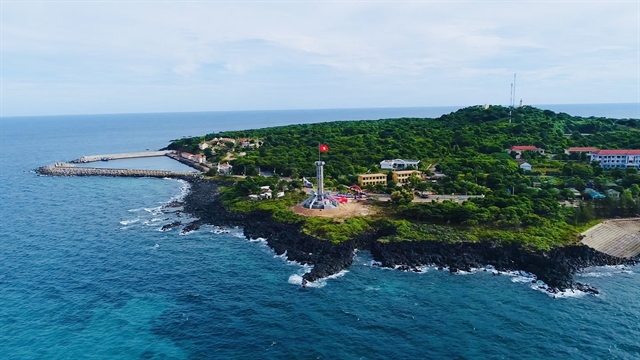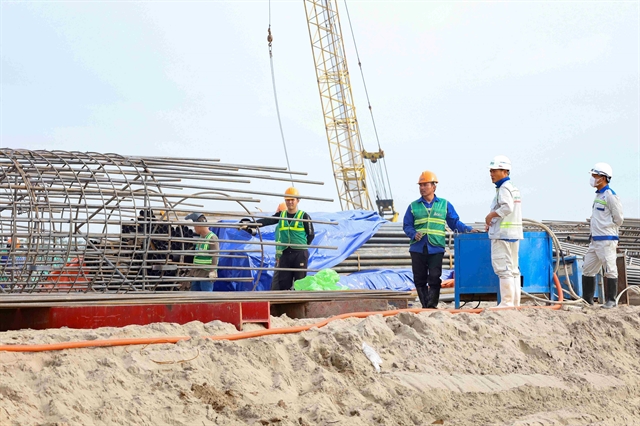 Society
Society

 |
| Investment in modern technology, including equipment integrated with artificial intelligence (AI), is creating a leap in efficiency in supporting infertility treatment. Photo suckhoedoisong.vn |
HÀ NỘI – Assisted reproductive technology and infertility treatment are not only helping to bring happiness to infertile couples, but also contributing to effectively solving difficult problems of modern society.
However, in the context of a 'booming' infertility treatment service, not every couple can choose the right place to fulfil their wish of having children.
Outstanding achievements
It has been nearly 30 years since the first test tube baby was born in HCM City’s Từ Dũ Hospital, so in-vitro fertilisation (IVF) technology is no longer unfamiliar to the community of infertile families across the country.
The technological miracle, experiences of medical teams and the development level of the entire medical industry, brings happiness to tens of thousands of families every year.
Every year, it is estimated that Việt Nam carries out more than 50,000 IVF cases with a success rate of 40-50 per cent, compared to the 40-43 per cent average rate in the rest of the world.
Other statistics show that every year, there are between one and 1.4 million babies born across the country, three per cent of whom are born using IVF technology.
The Vietnamese medical industry is gradually mastering all the world's advanced techniques in the infertility field, such as injecting sperm into the egg cytoplasm, IVF with frozen embryos, sperm culture, pre-implantation genetic testing, applying artificial intelligence to monitor embryo development, selecting genetically healthy embryos and in vitro maturation of immature eggs (CAPA-IVM).
This not only helps shorten the journey of 'finding children' but also optimises costs for couples reducing social burdens.
Not only does it have a high rate of success, the cost for an IVF case in Việt Nam ranges between VNĐ80-120 million (US$3,000-4,600) as compared to $10,000 in the Philippines, Thailand and Singapore, or even $25,000 in developed countries.
In the past, many couples still prioritised going abroad to get IVF, but now with the strong development of skills, high capacity of the domestic medical teams and those positive success rates, as well as attractive costs, Việt Nam is gradually becoming the destination for many infertile couples in the world.
This is gradually opening up attractive opportunities for a new market - infertility treatment within the Vietnamese medical industry.
Smart choice
Statistics show that there are 65 medical facilities with a guaranteed capacity to treat infertility across the country. But the number will increase year by year with process of mobilising non-State budget resources for investment in medical establishments.
"Infertility is a sensitive issue for many couples. The infertility treatment process often causes a lot of pressure. For many couples, the treatment journey can be long, tiring and expensive, even creating 'psychological ghosts' for the patient," said Dr Hồ Cao Cường, director of the Sài Gòn Reproductive Support and Andrology Hospital.
"Bringing pleasant experiences during the treatment process and relieving psychological pressure for patients is a very important part, helping to increase the success rate when performing IVF techniques, as well as other infertility treatment support solutions," he said.
According to experts, several key criteria are considered when selecting a medical facility for IVF, including the success rate, infrastructure and technology, the team of doctors and embryologists, transparent and reasonable costs, waiting time and working procedures, counselling and psychological support for patients, along with feedback from former patients.
IVF success rates tend to be significantly higher at facilities equipped with a modern infrastructure and advanced technology, paired with experienced specialists, particularly in embryology and genetics.
Babies born through IVF at such centres are also generally healthier, with reduced risk factors. As a result, treatment costs are often significantly reduced, easing the financial burden on families.
The reality is that the participation of private-sector players in the fertility treatment market has created more opportunities for families to access IVF. VNS

.jpg)

.jpg)
